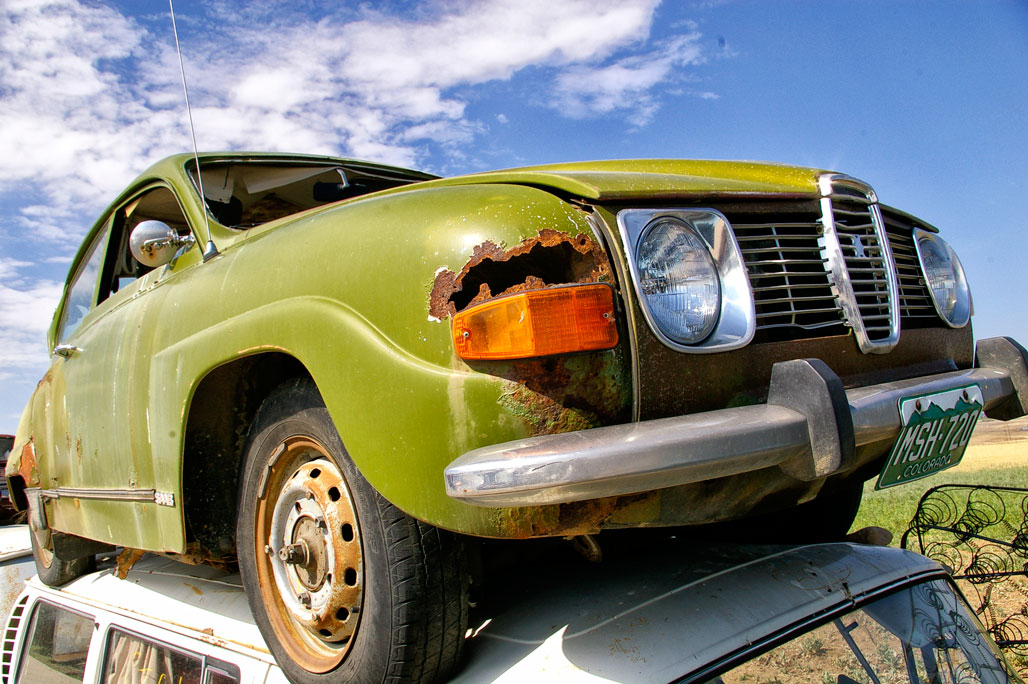Today’s Post by Joe Farace
And my Saab is so great I’m gonna marry it.—Tori Amos

Although I never owned a SAAB automobile I have always wanted one and am sad that the marque has faded into oblivion, although rumors of a (hopeful) rebirth continue to surface from time to time. Mary and I almost bought a SAAB Aero Wagon but we just a hour short before the local Cadillac dealer sold it. I hope the new owner cared for it and cherished the car. It deserved it. I’ve always wanted to own, what I call a Saaburu aka SAAB 9-2 Aero, really just a Subaru WRX wagon with SAAB trim but I always though owning and driving one would be fun. And then there is the story of the SAAB Sonett that got away…The above SAAB 99 (I think) was photographed at a salvage yard in Erie, Colorado/
Let’s Bracket
 Under tricky lighting conditions, sometimes the best solution is to shoot a series of images varying your exposures with each one from what would be considered underexposure to normal and then overexposure.
Under tricky lighting conditions, sometimes the best solution is to shoot a series of images varying your exposures with each one from what would be considered underexposure to normal and then overexposure.
The technique of “bracketing” has been around since the film days and in the digital era most DSLRs or mirrorless cameras have an automatic bracket option, so in continuous mode, you can shoot three (or more) frames fast. It’s a time honored photo technique in which multiple images of the same subject are made at different exposure settings. The idea is that one of them will be best and others may be acceptable.
Above left is typically what a typical auto bracket menu item looks like and clicking the control (it varies from camera to camera so check your User’s Guide) lets you set bracketing parameters. Typicality, when using a camera’s Auto Bracket mode the first frame is exposed at what would be considered “normal” exposure, the second is underexposed by a predetermined amount and the third is overexposed by that same amount, although some cameras give you the option of changing the order in which these frames are shot to suite your workflow. For instance, you can change the order in which the exposures are made from – 0 + for traditionalists and my personal favorite or + 0 – with variations on that theme. Typically the amount is in fractions of a stop—I prefer 1/3rd stop—but in extreme examples, full stops might be useful too.

Above is a bracketed series of three exposures made in the classic order of underexposed, normal and overexposed. Alternatively, I sometimes will make an exposure using whatever manual or automatic mode I think is correct for the situation and adjust the camera’s exposure compensation control but when in doubt you can always do what photographers have done since the invention of 35mm film—bracket.
Tip: Because the LCD preview screen on some digital cameras can slightly misrepresent an image’s contrast or even its brightness, it is easy to look at what you think is a well-exposed image but may be actually slightly underexposed. By practicing bracketing you will gradually learn how to evaluate the image on your LCD screen and be make any adjustments.

Along with photographer Barry Staver, Joe is co-author of Better Available Light Digital Photography that’s out-of-print but new copies or used copies are available from Amazon, as I write this.